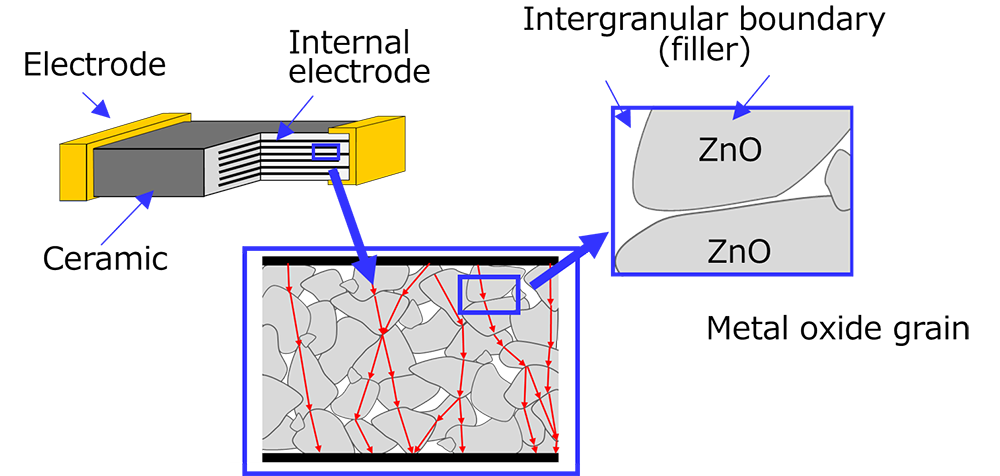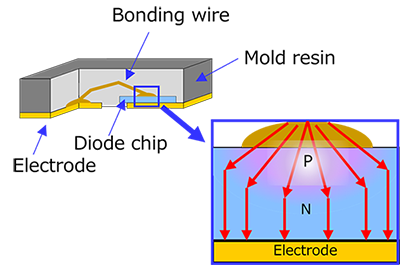- General Top
- SEMICONDUCTOR
- STORAGE
- COMPANY
-
My ToshibaSemicon
- Semiconductor Top
-
ApplicationsAutomotive
Body Electronics
xEV
In-Vehicle Infotainment
Advanced Driver-Assistance Systems (ADAS)
Chassis
IndustrialInfrastructure
BEMS/HEMS
Factory Automation
Commercial Equipment
Consumer/PersonalIoT Equipment
Healthcare
Wearable Device
Mobile
Computer Peripherals
-
ProductsAutomotive Devices
Discrete Semiconductor
Diodes
Transistors
Logic ICs
Analog Devices
Digital Devices
Wireless Devices
※
: Products list (parametric search)
Power SemiconductorsSiC Power Devices
※
: Products list (parametric search)
Isolators/Solid State RelaysPhotocouplers
Digital Isolators
Solid State Relays
Fiber Optic Transmitting Modules
※
: Products list (parametric search)
MOSFETsIGBTs/IEGTsBipolar Transistors※
: Products list (parametric search)
Diodes※
: Products list (parametric search)
MicrocontrollersMotor Driver ICsIntelligent Power ICs※
: Products list (parametric search)
Power Management ICsLinear ICs※
: Products list (parametric search)
General Purpose Logic ICsLinear Image SensorsOther Product ICsOther Product ICs
※
: Products list (parametric search)
-
Design & Development
-
Knowledge
- Where To Buy
- Part Number & Keyword Search
- Cross Reference Search
- Parametric Search
- Stock Check & Purchase
This webpage doesn't work with Internet Explorer. Please use the latest version of Google Chrome, Microsoft Edge, Mozilla Firefox or Safari.
require 3 characters or more. Search for multiple part numbers fromhere.
The information presented in this cross reference is based on TOSHIBA's selection criteria and should be treated as a suggestion only. Please carefully review the latest versions of all relevant information on the TOSHIBA products, including without limitation data sheets and validate all operating parameters of the TOSHIBA products to ensure that the suggested TOSHIBA products are truly compatible with your design and application.Please note that this cross reference is based on TOSHIBA's estimate of compatibility with other manufacturers' products, based on other manufacturers' published data, at the time the data was collected.TOSHIBA is not responsible for any incorrect or incomplete information. Information is subject to change at any time without notice.
require 3 characters or more.
What is the difference between ESD protection diode and varistor?
ESD protection diodes and varistors (metal oxide varistors, MOVs) are often used as electrostatic protection elements. ESD protection diodes are characterized by a short turn-on time and low series resistance (dynamic resistance) during operation. Varistors are characterized by their large allowable current capacity and the ability to manufacture products with large capacitance. However, due to the structure of the element, it is difficult for varistors to achieve both low capacitance and low breakdown voltage.
When a voltage is applied in the opposite direction to a diode, the current increases rapidly at a certain voltage.This voltage is characterized by high accuracy, and the target voltage value can be changed depending on factors such as impurity concentration. It is said to be unidirectional because it is mainly used in the reverse bias direction. However, since the forward direction is also turned on at a fixed forward voltage VF, it can protect elements such as ICs from negative ESD. Some ESD protection diodes have two diodes connected internally with cathodes and have bidirectional characteristics. Of course, this product is also available in a small package.
(For unidirectional and bidirectional, please refer to the FAQ below.)
Is it necessary to use bidirectional TVS diodes (ESD protection diodes) to protect against both positive and negative ESD events?
On the other hand, varistors have a structure in which metal oxide particles are placed with a filler in between, and this structure creates a Schottky junction (double Schottky barrier) between the metal oxide particles and the filler. The circuit configuration is just like the anode common junction of a diode. When a voltage is applied, one side of the Schottky becomes reverse biased, and in a configuration using ZnO as a metal oxide, the current increases rapidly at a reverse bias of about 3 V per junction.
This makes the varistor bidirectional.
The structures of the two elements are significantly different. ESD protection diodes are diodes formed on a Si substrate, while varistors are ceramics made by burning a mixture of metal oxide particles and fillers. It consists of multiple diodes formed by internal metal oxide particles and fillers. The number of diodes connected in series determines the varistor voltage. Creating the desired breakdown voltage is accomplished by varying the thickness of the ceramic, which is composed of metal oxides and fillers.
The main differences in characteristics are as follows.
- Varistor is bidirectional, ESD protection diode is unidirectional
(However, we are currently mass producing ESD protection diodes that are bidirectional by connecting the cathodes of two diodes in common.) - Varistor characteristics may deteriorate after ESD is applied
- ESD protection diode starts up quickly (short turn-on time)
Internal structure and operation:
ESD protection diodes are elements that utilize the Zener characteristics of diodes constructed on a Si substrate, and when ESD is applied, discharge current flows in a determined path.
On the other hand, a varistor uses electrodes to sandwich ceramic plates made of metal oxide particles (such as ZnO) and fillers such as bismuth oxide, which are compacted and sintered at high temperatures. Protection is provided by Schottky junctions between the metal oxide particles and the filler. There are a large number of these junctions, forming a complex series/parallel network between the electrodes. Since the Zener voltage in one junction is approximately 3 V, 10 junctions are required for a 30 V varistor product. By connecting multiple series paths in parallel, a large allowable current can be achieved. However, since each path length is different, the series resistance is different for each path. This means that the rising waveform of a varistor is soft, unlike the hard waveform of an ESD protection diode. This is why the startup time is said to be slow.
Therefore, when comparing products with the same capacity, the 1st peak voltage of ESD protection diodes is lower.
Additionally, the magnitude of the current flowing through each path in a varistor varies. Current concentration in some paths can melt the junction and degrade performance after ESD is applied.
For this reason, ESD protection diodes are ideal for protecting externally exposed electrodes that are likely to be repeatedly subjected to ESD.


Related Links
The following documents also contain related information.
FAQs
Application Notes
* Company names, product names, and service names used in this FAQ may be of their respective companies.

